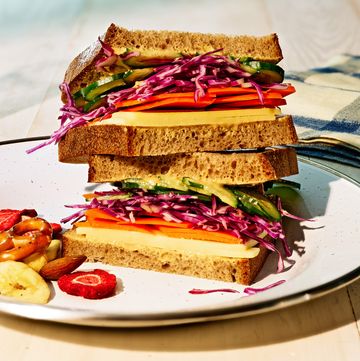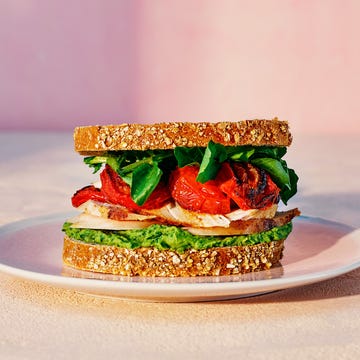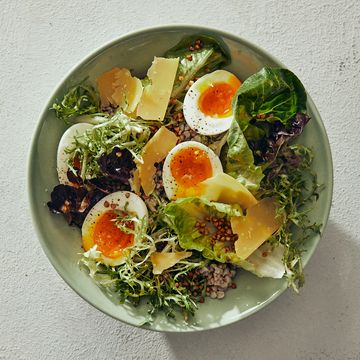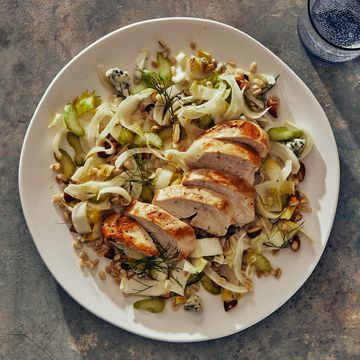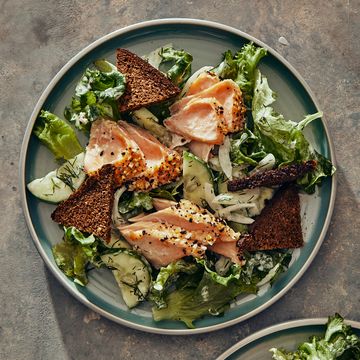Some people say there’s nothing better than chocolate—and as far as we’re concerned, it's absolutely true. But whether you’re a seasoned baker or your expertise stops at the grocery store candy aisle and Valentine's Day gifts, chocolate can be a confusing ingredient, especially when it comes to deciphering the different varieties out there. You may know your way around dark, milk, and white chocolate, but what about cacao vs. cocoa? Chances are you’re not exactly sure what sets them apart from each other.
That’s because, although different, the two ingredients actually come from the exact same place: the cacao tree. Typically found in Africa, South America, Asia, and parts of North America, these trees are grown by more than 50 million farmers around the world, according to the American Geographical Society. As they mature and ripen, cacao trees produce seeds called beans, pods, or nuts, which are harvested and processed to varying degrees to create cocoa and cacao.
Their similarities pretty much end there—there are some fundamental differences between the two, from flavor to how they're made to the benefits they offer. Here's what set cacao and cocoa apart and how to cook with these two ingredients.
Meet the expert: Danielle Ryan Broida is is a registered herbalist of the American Herbalists Guild, certified holistic nutritionist, and national educator at Four Sigmatic.
What's the difference between cacao and cocoa?
“Cacao is minimally processed, keeping many of the beneficial nutrients intact,” explains Danielle Ryan Broida, a holistic nutritionist and the author of Healing Adaptogens. “In fact, real cacao is the most phytochemically complex food on the planet, with 1,200 active compounds that support your brain, heart, and immune system.” To make cacao, cacao beans are fermented and roasted at a low temperature, then broken into tiny pieces called cacao nibs or ground into a powder.
Cocoa, on the other hand, is made by fermenting the cacao beans, then roasting them at a very high temperature. The resulting cocoa nibs are ground into a thick syrupy paste called cocoa liquor, and that paste is then turned into the cocoa powder we know and love.
“The cacao butter is removed in the process, baking soda is added, and the final product gets pulverized and sifted to turn it into what consumers purchase as cocoa,” Ryan Broida says. “But the bean is highly processed and exposed to high temperatures that remove the beneficial fats (cacao butter) and other important minerals and antioxidants.”
Which is healthier, cacao or cocoa?
While comparing cacao to cocoa isn’t totally like comparing apples to oranges, it is important to note their differences when deciding which of the two ingredients to use.
First and foremost, the taste is drastically different. “Cacao, the less refined, minimally processed, and more nutrient-dense version, has a strong bitter flavor,” Ryan Broida notes. “But tasting bitter flavors is actually an important part of our bodies utilizing the medicinal constituents in the bean. Bitter signals liver detoxification and a cascade of reactions in the body.”
By contrast, cocoa, the precursor to modern-day chocolate, is like a milder, slightly less sweet version of chocolate because it’s only after adding milk and sugar to cocoa powder that we get chocolate. That said, a lot of the cacao vs. cocoa debate simply boils down to a matter of personal flavor preference.
From a nutritional standpoint, one ingredient is indeed superior to the other. “Cacao is significantly more beneficial than cocoa for its brain, longevity, and immune benefits,” Ryan Broida explains. “One example is that cacao contains magnesium, a critical mineral responsible for hundreds of functions in the body. Think of magnesium like the body’s cellular relaxer." Cacao is a great way to supplement the body naturally with this critical mineral.
Cacao is also an adaptogen, meaning it’s a non-toxic, non-specific, and normalizing species with a long history of anecdotal use. “If you are looking for the true benefits from ‘chocolate,’ gravitate towards cacao over cocoa!” Ryan Broida adds.
Can I substitute cacao for cocoa?
Now that we know cacao is nutritionally better than cocoa, it would seem only natural that we reach for it even when a recipe calls for the sweeter, less beneficial of the two—and in most cases, this swap works seamlessly.
“If a recipe calls for cocoa, you can absolutely swap it with an organic cacao,” says Ryan Broida. The only thing to keep in mind when making this substitute is to stick to the medium dictated in the recipe. So, if it calls for cocoa powder, make sure you’re using a cacao powder and not say, cacao nibs.

Gabby Shacknai is a New York-based journalist and editor who produces high-quality content for a wide variety of outlets and brands across various industries.





